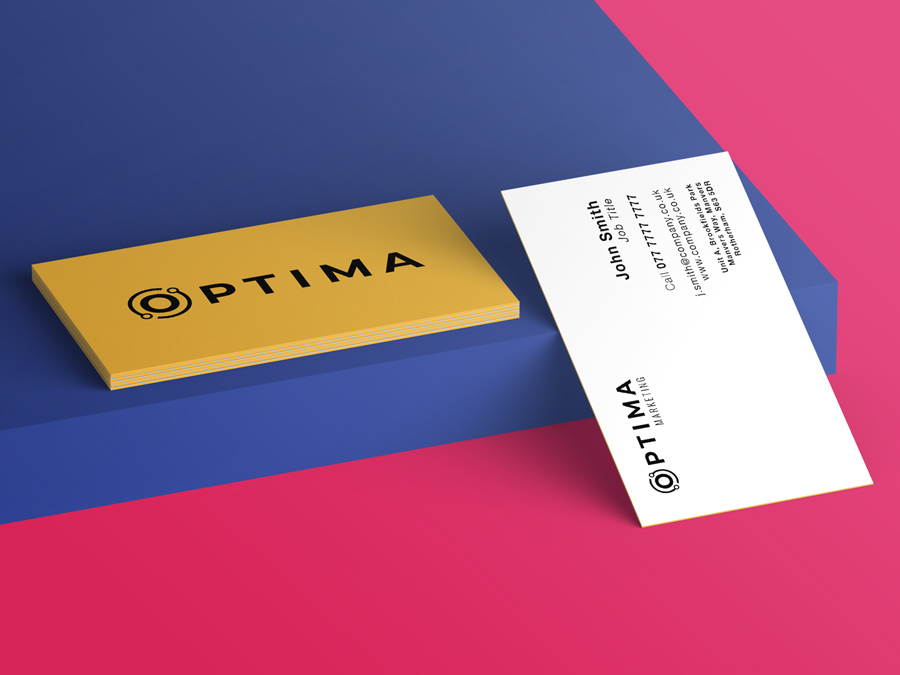New Biometric Research Reveals the Perfect Business Card Design
[ad_1]
• Four in ten UK adults (40%) have had their perception of a business or company negatively impacted by the quality and/or design of a business card alone, new research reveals.
• Biometric analysis (using eye tracking, heart rate monitoring, and 1-100 dial rate scoring) reveals what overall designs, and fonts/colours are favoured most.
• One in three (31%) say a no-frills design with only essential information was always their preference
• Further information can be found here.
Four in ten UK adults (40%) have had their perception of a business or company negatively impacted by the quality and/or design of a business card alone, new research reveals.
The study with 2,000 people1, undertaken by online printing specialists, instantprint, showed just how impactful a bad design can be; sparking further investigation into what we consider to be a good design.
Following the initial nationwide poll, instantprint conducted in-depth biometric analysis2 with seven business card variations across ten industries (70 cards in total). Users had their eyes tracked (heatmapping and pupil dilation) and heart rates monitored as they looked over each business card; revealing what grabbed their attention first, what got their heart rates going, and which designs interested them the most overall.
So, what makes the perfect business card design?
1. Colour: Yellow and white are the most appealing colours for the background of a business card, according to the biometric analysis. Strong primary blues and green were also popular accent colour option across the board.
2. Text: All copy should be easy-to-read and evenly spaced, with black or white text colour most appealing. Classic fonts were consistently more popular than modern typefaces.
3. Logo: Users showed a preference for simple and representative logos that took up no more than 25% of the total business card space.
Overall, the findings outlined a tendency towards simplicity over more unique and statement designs.
This was again reinforced in instantprint’s poll, with traditional card layouts with logos/fonts/colours that accurately represent a business’ services favoured by nearly half (45%) of all respondents, and one in three (31%) saying a no-frills design with only essential information was always their preference.
Jon Constantine-Smith, Head of instantprint, commented on the findings:
“It is fascinating to see just how much impact the design of a business card can have on the perception of a business, but also how opinions do vary between industries, generations and genders.
“Driving new customers can be challenging for any business, so turning someone off when you hand a card over is of course something to avoid!
“When it comes to the design of your business stationery, it can be tricky to get it right, but considering your audience, and following the advice laid out by this research – keeping it simple and representative of your services – is a great starting point.”
For more findings from instantprint’s business card research, including a video showing the full biometric testing process, please visit: https://www.instantprint.co.uk/printspiration/print-design-tips/the-science-of-creating-the-perfect-business-card
Methodology
1. Survey of 2,000 adults.
2. Biometric analysis using Gazepoint testing equipment, connected to a PC. This was conducted in November 2019. We set up an eye tracking camera, biometrics dial and heart rate monitor with a PC. The test itself involved using seven business card design variations across ten different industries (70 in total). Once the equipment was set up, it was time to start recording results. We invited a selection of people to undertake the test to ensure the insight was representative of a broad demographic. Each person had to sit directly in front of the GP3 eye tracking camera so the camera could focus on the individual’s pupils using infrared. Each user placed his or her index fingers in the heart rate monitor and placed their other hand on the 0-100% dial, to rate how they felt about each design. Before the test could begin, we calibrated the eye tracking camera for each user to ensure that their eyes were being accurately tracked. Once the calibration was complete, the user was then allowed to begin the test which took around 5 minutes. When all tests were complete, we exported the data and footage to analyse the results.
About instantprint
Founded in 2009, instantprint is an online printing company, made up of a friendly bunch of talented individuals with a hunger to help their customers reach their customers in the best way. With print that makes them look amazing. And helps their business to flourish. Making them so much more than a printing company.
instantprint are proud to offer sustainable print services, using the greenest possible paper options available, and on top of this they are FSC certified. The company are also ISO certified, and all of their packaging (even the plastic!) is recyclable. They pride themselves on their partnerships with several waste management companies, which means they recycle 97% of all their waste.
instantprint recently announced plans of their 2020 expansion. The printing firm will increase their total footprint by 45% to 145,000 sq. ft paving the way for its continual growth.
instantprint was named the national winner of the 2019 Customer and Market Engagement at the European Business Awards.
instantprint specialises in 24-hour flyer and leaflets, business cards, posters and stationery. Thanks to a recent 3.25m investment, the printing giant is now able to produce and deliver stapled booklets within two working days.
